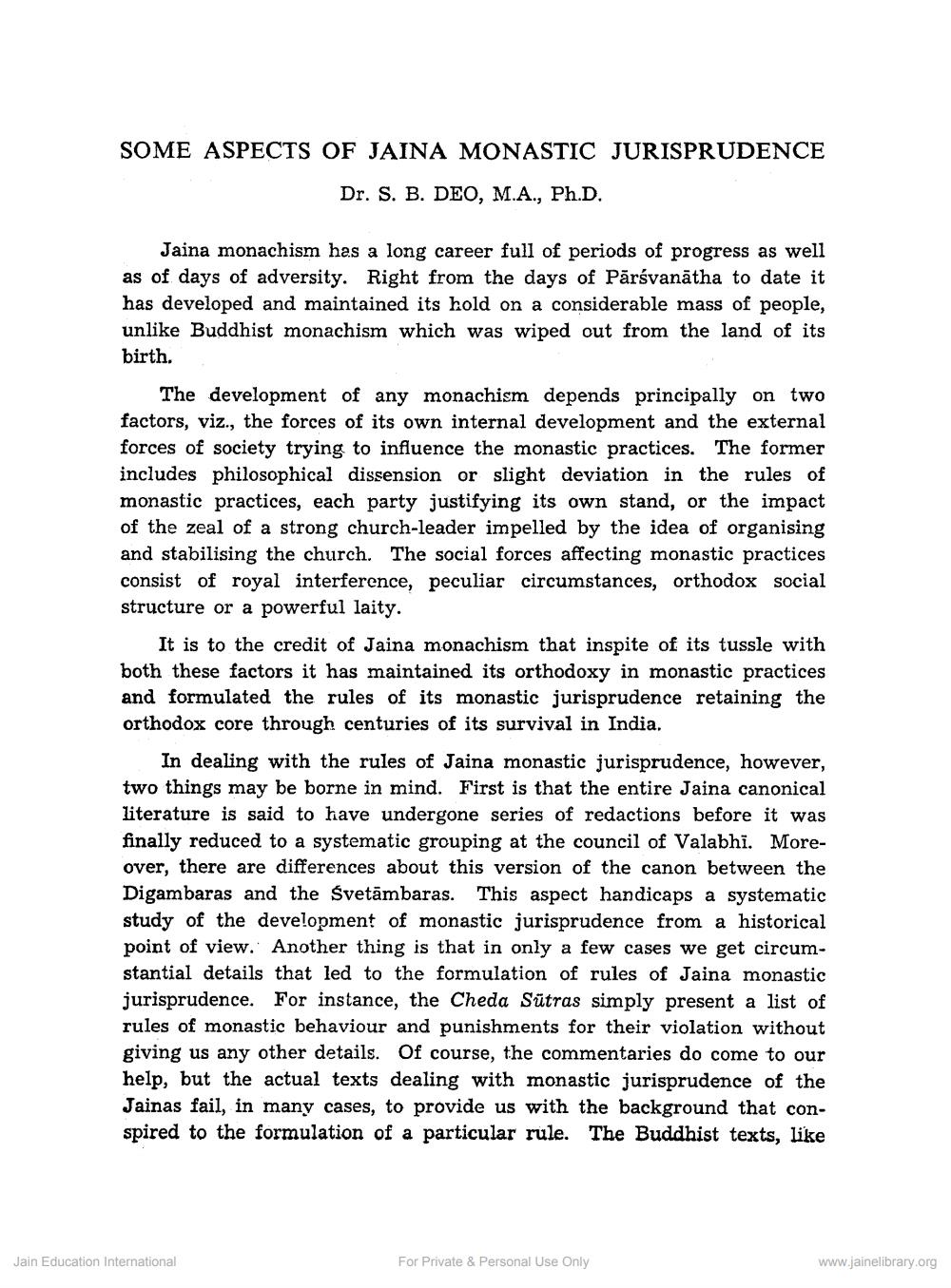Book Title: Some Aspects of Jaina Monastic Jurisprudence Author(s): S B Deo Publisher: Z_Vijay_Vallabh_suri_Smarak_Granth_012060.pdf View full book textPage 1
________________ SOME ASPECTS OF JAINA MONASTIC JURISPRUDENCE Dr. S. B. DEO, M.A., Ph.D. Jaina monachism has a long career full of periods of progress as well as of days of adversity. Right from the days of Pārsvanātha to date it has developed and maintained its hold on a considerable mass of people, unlike Buddhist monachism which was wiped out from the land of its birth. The development of any monachism depends principally on two factors, viz., the forces of its own internal development and the external forces of society trying to influence the monastic practices. The former includes philosophical dissension or slight deviation in the rules of monastic practices, each party justifying its own stand, or the impact of the zeal of a strong church-leader impelled by the idea of organising and stabilising the church. The social forces affecting monastic practices consist of royal interference, peculiar circumstances, orthodox social structure or a powerful laity. It is to the credit of Jaina monachism that inspite of its tussle with both these factors it has maintained its orthodoxy in monastic practices and formulated the rules of its monastic jurisprudence retaining the orthodox core through centuries of its survival in India. In dealing with the rules of Jaina monastic jurisprudence, however, two things may be borne in mind. First is that the entire Jaina canonical literature is said to have undergone series of redactions before it was finally reduced to a systematic grouping at the council of Valabhi. Moreover, there are differences about this version of the canon between the Digambaras and the Svetämbaras. This aspect handicaps a systematic study of the development of monastic jurisprudence from a historical point of view. Another thing is that in only a few cases we get circumstantial details that led to the formulation of rules of Jaina monastic jurisprudence. For instance, the Cheda Sütras simply present a list of rules of monastic behaviour and punishments for their violation without giving us any other details. Of course, the commentaries do come to our help, but the actual texts dealing with monastic jurisprudence of the Jainas fail, in many cases, to provide us with the background that conspired to the formulation of a particular rule. The Buddhist texts, like Jain Education International For Private & Personal Use Only www.jainelibrary.orgPage Navigation
1 2 3 4 5 6 7 8 9 10 11 12 ... 14
